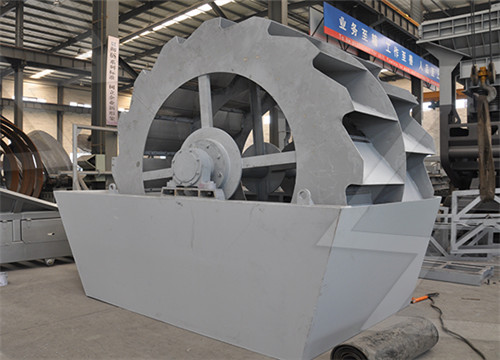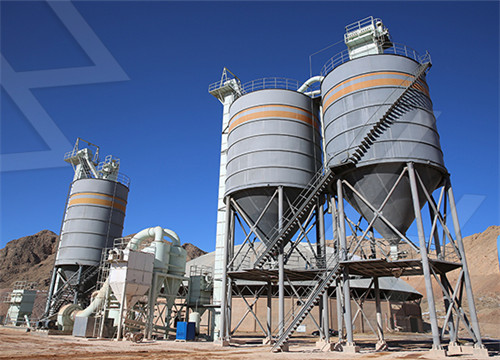cement raw material grinding

Cement - Extraction, Processing, Manufacturing Britannica
There are four stages in the manufacture of portland cement: (1) crushing and grinding the raw materials, (2) blending the materials in the correct proportions, (3) burning the
获取价格
进一步探索
Cement manufacturing process: Step-by-step guideCement Manufacturing Process Phases Flow Chart
Energy-Efficient Technologies in Cement Grinding IntechOpen

OK™ raw mill Reliable and efficient raw material grinding
efficient cement VRM available with the highest reliability and ease of operation. In 2017, introduced the OK raw mill, which is designed with the same proven
获取价格
How Is Cement Produced in Cement Plants Cement Making
Generally, the proportion of components in cement raw materials is 67-75% limestone, 10-15% clay, 0.5-1.5% iron ore and 8.5-11% coal. The laboratory of a cement plant. With the help of vertical roller mills or other types of crushers, the raw materials are blended and further ground into smaller pieces of raw meal in the cement plant.
获取价格
Rawmill - Wikipedia
A medium-sized dry process roller mill. A raw mill is the equipment used to grind raw materials into "rawmix" during the manufacture of cement. Rawmix is then fed to a cement kiln, which transforms it into clinker, which is then ground to make cement in the cement mill.The raw milling stage of the process effectively defines the chemistry (and therefore
获取价格
11.6 Portland Cement Manufacturing - U.S. Environmental
H. Raw material grinding/drying -13 I. Clinker cooler -14 J. Clinker piles -15 K. Clinker transfer -16 L. Clinker grinding -17 M. Cement silos -18 N. Cement load out -19 ... Cement raw materials are received with an initial moisture content varying from 1 to more than 50 percent. If the facility uses dry process kilns, this moisture is usually ...
获取价格
Cement Raw Materials Grinding Process (Raw Mill System) _
观看视频12:572022年3月3日 Cement Raw Materials Grinding Process (Raw Mill System) _ English Version.Raw Mill System is a system for grinding raw materials in the form of raw materials...
获取价格
What Is Cement Definition, History, Types Application
Portland cement can be manufactured from any two groups above. This raw material must be used in the proper form and proportions of lime, silica, and alumina. Read More: Cement Test 8 Test on Cement Cement Testing Methods. Manufacture of Cement. There are four stages in the manufacture of portland cement, Crushing and Grinding; Blending the ...
获取价格
Modernizing cement manufacturing in China leads to substantial
2022年11月17日 The LCA model comprises resource extraction, raw material preparation, clinker calcination, and cement grinding (Fig. 5). Transport and the cement packaging process are not included in the LCA ...
获取价格
Cement Grinding Plant Overview Cement Grinding Unit AGICO Cement
2019年10月11日 As we all know, the cement production can generally be divided into three processes: raw material preparation, clinker production and finished cement production. The cement grinding plant is a vital link of the finished cement production. The cement grinding plant also called cement grinding unit, is used to grind clinker into qualified
获取价格
Modeling of energy consumption factors for an industrial cement ...
2022年5月9日 The main motor power is related to the rollers' applied pressure (working pressure) and the feed rate of raw materials on the grinding table. The hot gas was produced by kiln and preheater 7 .
获取价格
A critical review on energy use and savings in the cement industries ...
2011年5月1日 A VRM is widely used for raw material and coal grinding in the cement industry. 5.1.3. High pressure roller grinding (HPGR) A HPGR was first commercilized in 1985. Its success resulted in increasing number of applications in the cement industry [64]. Various circuit configurations were then developed for energy efficient cement grinding
获取价格
Review on vertical roller mill in cement industry its performance ...
2021年1月1日 Stacking Reclaiming of Raw material: Swing type stacker Reclaimer: Limestone other raw material are stored in open area into a longitudinal storage unit called stockpile through Stacker. These are then extracted transversely from the stockpile through reclaimer: 3: Raw Meal Grinding Homogenization: Grinding Mill - Vertical
获取价格
OK™ Raw and Cement Mill -
Smart vertical roller mill design for raw, cement and slag grinding. The OK™ Mill was originally designed for cement grinding. In 2017 we released the OK™ vertical roller mill for raw materials grinding. The OK™ Mill’s modular design comes with unique flexibility, showcasing parts commonality, where spare parts can be shared between ...
获取价格
EVERYTHING YOU NEED TO KNOW ABOUT ESTABLISHING CEMENT GRINDING PLANT ...
Storage of Raw Materials on Site. The areas for the storage of raw materials on site are shown in plan at Appendix C on page 90 and page 91. The raw materials will be stored at two locations on the site; one for the clinker with a storage capacity of around 40,000 MT, and one for gypsum, slag and additives with a capacity of around 10,000 MT.
获取价格
Cement Definition, Composition, Manufacture, History, Facts
cement, in general, adhesive substances of all kinds, but, in a narrower sense, the binding materials used in building and civil engineering construction. Cements of this kind are finely ground powders that, when mixed with water, set to a hard mass. Setting and hardening result from hydration, which is a chemical combination of the cement ...
获取价格
11.6 Portland Cement Manufacturing - US EPA
1971年8月17日 raw material processing operations differ somewhat for wet and dry processes, as described below. Cement raw materials are received with an initial moisture content varying from 1 to more than 50 percent. If the facility uses dry process kilns, this moisture is usually reduced to less than 1 percent before or during grinding.
获取价格
OK™ Raw and Cement Mill -
Smart vertical roller mill design for raw, cement and slag grinding. The OK™ Mill was originally designed for cement grinding. In 2017 we released the OK™ vertical roller mill for raw materials grinding. The OK™ Mill’s modular design comes with unique flexibility, showcasing parts commonality, where spare parts can be shared between ...
获取价格
EVERYTHING YOU NEED TO KNOW ABOUT ESTABLISHING CEMENT GRINDING PLANT ...
Storage of Raw Materials on Site. The areas for the storage of raw materials on site are shown in plan at Appendix C on page 90 and page 91. The raw materials will be stored at two locations on the site; one for the clinker with a storage capacity of around 40,000 MT, and one for gypsum, slag and additives with a capacity of around 10,000 MT.
获取价格
Cement Definition, Composition, Manufacture,
cement, in general, adhesive substances of all kinds, but, in a narrower sense, the binding materials used in building and civil engineering construction. Cements of this kind are finely ground powders that, when
获取价格
11.6 Portland Cement Manufacturing - US EPA
1971年8月17日 raw material processing operations differ somewhat for wet and dry processes, as described below. Cement raw materials are received with an initial moisture content varying from 1 to more than 50 percent. If the facility uses dry process kilns, this moisture is usually reduced to less than 1 percent before or during grinding.
获取价格
Ventilation Prediction for an Industrial Cement Raw Ball Mill by
2021年6月10日 1. Introduction. In the cement industry, grinding is one of the most consuming energy stages in the production units. Around 65% of the total used electrical energy in a cement plant has to be utilized to grind raw materials, coal, and clinker [1,2].Through the process, many variables can affect the efficiency and productivity of this
获取价格
White cement manufacturing process - AGICO Cement Plant
Cement raw materials grinding: most of cement raw materials should be ground in the cement mill, and the grinding body can’t contain iron. As for the fineness, the white cement manufacturing process requires a finer size than that of Portland cement.
获取价格
How Cement Is Made
The finely ground raw material or the slurry is fed into the higher end. At the lower end is a roaring blast of flame, produced by precisely controlled burning of powdered coal, oil, alternative fuels, or gas under forced draft. ... After the clinker is cooled, cement plants grind it and mix it with small amounts of gypsum and limestone. Cement ...
获取价格
From raw materials Extracting raw materials Raw material
From raw materials to cement Extracting raw materials Crushing and transportation Raw material preparation I: Storage and homogenisation Raw material preparation II: Drying and raw grinding Burning The burning of the raw meal at approx. 1,450°C is carried out in Lepol or preheater kilns that work by varying methods, the
获取价格
Portland Pozzolana Cement Manufacturing - Cement Plant
Portland pozzolana cement shall be manufactured by mixing and inter-grinding Portland cement clinker, pozzolanic materials, and gypsum. The manufacturing process is approximately the same as ordinary Portland cement, which can be divided into four processes: raw material crushing, raw material grinding, clinker calcination, and
获取价格
A Review on Pyroprocessing Techniques for Selected Wastes
2020年2月9日 From the discussion, it has been established that the cement manufacturing and grinding technologies are capital-intensive investments. The kiln processes are advanced and use both electricity and natural fuels which are expensive and limited factors of production. The raw materials used in cement manufacturing are also limited and
获取价格
Raw Material Preparation in Cement Manufacturing Plant AGICO
The raw material preparation system of the 2 500 t/d cement production line can adopt the vertical mill with the disc diameter of 3 400 mm as the main grinding machine. When the grinding particle size is less than 60 mm, the fineness of the finished product is 16%, and the moisture content of the finished product is 0.5%.
获取价格
OK™ raw mill Reliable and efficient raw material grinding
Vertical Roller Mills (VRMs) have been the standard option for raw materials grinding in the cement industry for several decades. has supplied the global cement industry with leading VRM designs for all applications since they were first brought to market. The OK™ mill has been ’s standard cement VRM since 1993.
获取价格
11.6 Portland Cement Manufacturing - U.S. Environmental
H. Raw material grinding/drying -13 I. Clinker cooler -14 J. Clinker piles -15 K. Clinker transfer -16 L. Clinker grinding -17 M. Cement silos -18 N. Cement load out -19 ... Cement raw materials are received with an initial moisture content varying from 1 to more than 50 percent. If the facility uses dry process kilns, this moisture is usually ...
获取价格
Manufacture Of Portland Cement Process Flow chart - civil
2019年11月30日 Mixing of raw materials: The processes used for the manufacture of portland cement can be classified as dry and wet. In dry process. The raw materials are first reduced in size of about 25mm in crushers and Crushed material is ground to get fine particles into ball mill or tube mill. Each material after screening is stored in a separate
获取价格